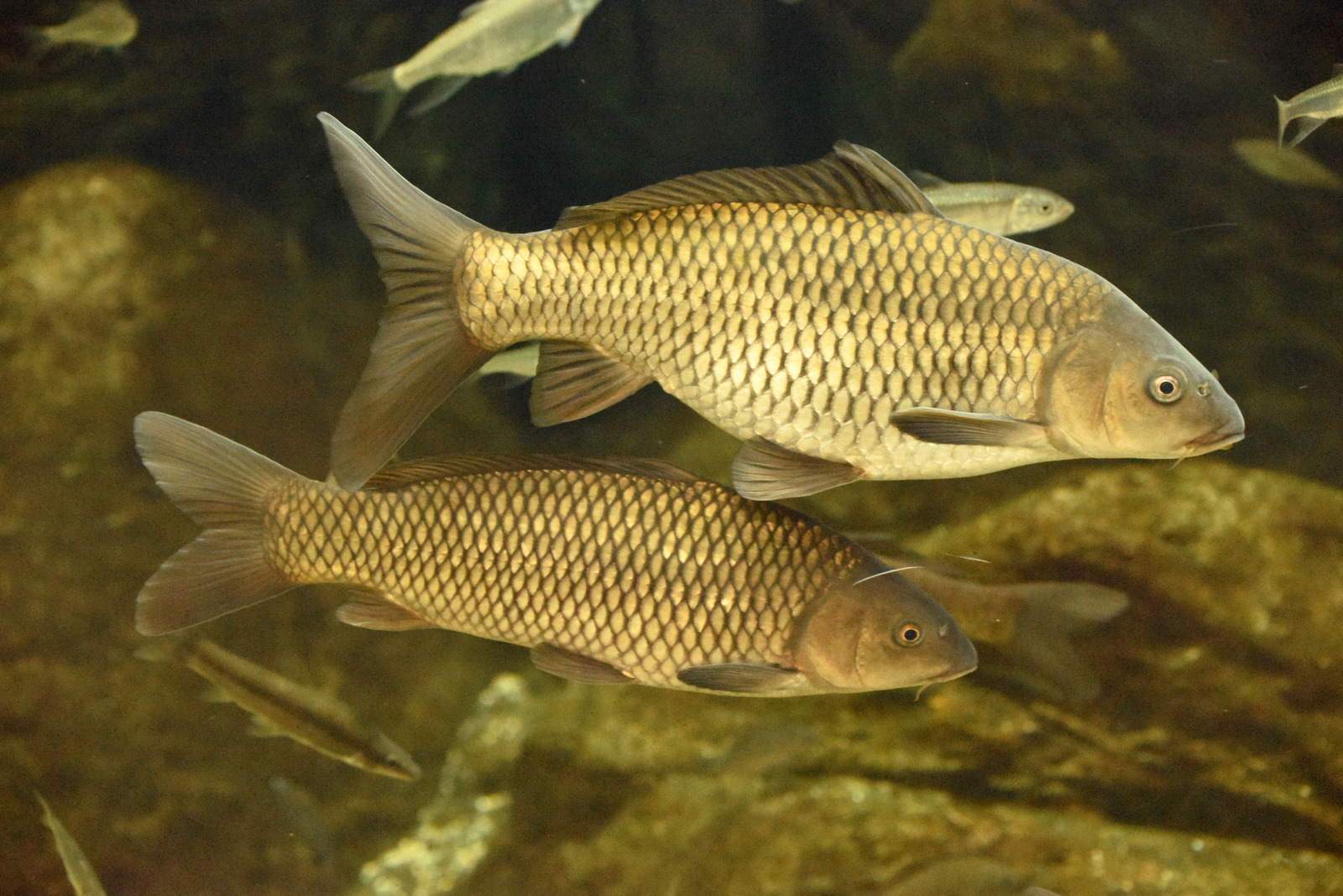What is the Difference Between Buffalo Fish and Carp?

At first glance, Buffalo and Carp look nearly identical. Both are big, beefy fish with similar body shapes. Both occupy a similar niche in the waters. Both are powerful swimmers who will give you a real fight on the end of your line.
Yet one is a native fish on the doorstep of the Endangered Species list, while the other is an invasive breeder you can’t pull out of the water fast enough (for U.S. Fish and Wildlife, that is). They also fish a bit differently.
So, what is the difference between buffalo fish and carp? It only takes about five minutes to learn the key differences between Buffalo and Carp. You’ll be back to casting in no-time!
We also have other articles here talking about mirror carp and ghost carp that you might want to read.
What is the Difference Between Buffalo Fish and Carp?
While sometimes referred to as “buffalo carp,” because of their near physical resemblance, buffalo fish are not remotely related to carp. Here are the most telling differences in their appearance:
| Buffalo | Common Carp |
| No “whiskers” or barbels. | Barbels or “whiskers” around the mouth. |
| Thick, rubbery lips, more down-turned mouth. | Large, round, forward-facing mouth. |
| Pale, “washed-out” colors: grey, blueish grey, smokey black (black buffalo), sometimes with orange spots on back, sides, and head (largemouth buffalo). | Vibrant, rich, almost metallic colors: bronze, brown, orange, yellowish, sometimes grey. |
| Tail color is usually darker than the body. | Tail color is the same as the body. |
| Generally swim in one direction when hooked. | Thrash, flip, and fight unpredictably. |
Buffalo fish (Ictiobus sp.)
Buffalo are a native fish species here in the US. They make their homes in the cold flowing waters of big rivers – like the Mississippi, Missouri, and Illinois rivers – and connecting waterways. They tend to stay down near the bed where they can scoop up nearly anything they can swallow as food with their down-turned mouths.
Despite their similar shape to that of carp, Buffalo belong to the suckerfish family. They’re the largest member of that family, too, reaching lengths of around 4’ and weighing in at 80lbs. That’s a whole lot of filets on one fish!
Catch-and-release might be a better idea when fishing for buffalo, as they are becoming increasingly more rare in the waterways. The fish are long-lived — Ictiobus cyprinellus can live over 110 years — and reproduce very slowly. Overfishing, mistaken identity, and the growing popularity of night bowfishing are threatening this species’ stability, particularly in the northern parts of its range.
Buffalo are growing in popularity as a sport fish. If you do decide to try your hand at them, I encourage you to check out an area where smallmouth buffalo (Ictiobus bubalus) are regularly stocked. Of the three buffalo species — largemouth (I. cyprinellus), black (I. niger) (see also best bait for largemouth bass fishing), and smallmouth (I. bubalus) — smallmouth are the easiest to raise commercially and therefore the most available buffalo species.
Other names for buffalo: gourd head, common buffalofish, roundhead, brown buffalo, marblehead, baldpate.
If you want to know how to catch a buffalo fish, read here.
Common Carp (Cyprinus carpio)
The typical common carp we pull frequently from US waters hail from Asia and belong in the minnow family. That’s right. Those insane, whisker-mouthed river monsters are, for all intents and purposes, oversized bait fish. If you are curious what do carp eat, and how and when to catch more carp, you can check out this article.
Well, almost. They were brought over here to the US in 1831 and spread around by the US Fish Commission as a table staple. My grandmother used to make a dish called “mock salmon” out of carp that Grandpa brought home, and I’d be darned if it didn’t taste like the real deal!
Unfortunately, carp are extremely hardy and thrived in our rivers and lakes to the point where they are now considered invasive in some regions. Carp are able to out-compete slower growing native species for food and territory, and it’s possible they damage habitats with their habit of pulling up vegetation as they root along the bottom searching for food.
The carp’s “fishy”-tasting flesh soon fell out of favor with the American populace, replaced by salmon, trout, and tilapia. It’s still a favorite meal in the rest of the world, however, and it’s considered a prized sport fish in Britain.
It’s not hard to find carp – they are literally everywhere – but if you’re looking to tackle a whopper, check out the Mississippi and Illinois river waterways.
For carp fishing tips, check this article.
The fighting instincts of Buffalo vs. Carp
You’ll definitely know whether you have a buffalo fish or a carp on the end of your line by the way they fight. They’re both hefty, powerful species, but they employ completely different tactics when hooked.
True to their namesake (Ictiobus in latin means “bull fish”), a buffalo will charge off in one direction, usually away from you, relying on its strength to get away. I will note that a buffalo fish’s mouth is small compared to its size. Their mouths are not much wider than a couple of inches, or about the length of your thumb, so keep that in mind when choosing a hook.
With a carp you’ll almost wish you brought a straight jacket with you, because these fish are insane in a fight! They swim in random, unpredictable directions, thrashing, spinning around, shaking their heads and even swimming right towards you – anything to dislodge that hook.
You’ll need a bit of experience to know when to give the line a bit of slack to keep the hook in. If you love a good fight, a big carp will certainly give you one!
We also have an article here on how to identify carp vs catfish that you might want to look into.
Reeling It In
The easiest way to tell the difference between a buffalo fish and a carp is to look at the mouth. If it haswhiskers (barbels), it’s a carp.
Buffalo have thick, rubbery, downturned mouths, and duller, washed-out looking grey to smokey-black scales. Sometimes they are brown or olive, and some have pale orange spots on their back, head and sides.
Carp have large, round, forward-facing mouths and more brilliant orange-brown to bronze scales. Silver carp are a brilliant whitish silver with upturned mouths and small eyes low on the head.
When hooked, buffalo tend to charge straight in one direction, whereas carp are wildly unpredictable and can shake out a hook if given a chance. They are both large, powerful fish that will give you a good challenging fight!
As an Amazon Associate, Fishermen's Angle earns from qualifying purchases. We get commissions for purchases made through links in this post.


